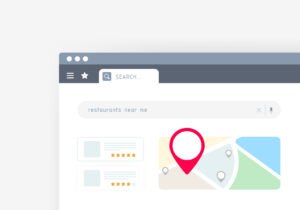Introduction
The e-commerce landscape is more competitive than ever. With millions of online stores vying for attention, having a visually appealing website and great products isn’t enough. You need an effective SEO strategy to improve online visibility, attract high-intent customers, and increase sales.
In this guide, we’ll break down proven SEO strategies that help e-commerce businesses rank higher on search engines, drive organic traffic, and boost conversions.
Why SEO Matters for E-commerce
- Increases search engine visibility for online stores – Higher rankings mean more organic traffic and sales.
- Reduces dependency on paid ads – A strong SEO foundation provides long-term, sustainable growth.
- Builds credibility and trust – Appearing on the first page of Google positions your store as a trusted brand.
A well-optimized e-commerce site works 24/7 to bring in potential buyers—without the high costs of paid advertising.
1. On-Page Optimization Tips for E-commerce Sites
On-page SEO involves optimizing individual pages of your site to rank higher. Here’s how to do it effectively:
Optimize Product Pages
- Keyword-Rich Titles & Descriptions – Use high-traffic, low-competition keywords naturally in product titles and descriptions. Example: Instead of “Men’s Sneakers,” try “Breathable Running Sneakers for Men – Lightweight & Durable”.
- Unique Product Descriptions – Avoid manufacturer-provided descriptions. Write compelling, original content that highlights features, benefits, and USPs.
- Use Structured Data (Schema Markup) – Help Google understand your product details (price, availability, ratings) by adding structured data markup.
Improve Site Structure & Navigation
- SEO-friendly URLs – Keep URLs clean and descriptive. Example:
- ✅
yourstore.com/men/running-sneakers - ❌
yourstore.com/product?id=1283
- ✅
- Breadcrumbs Navigation – Enhances user experience and helps search engines understand your site hierarchy.
- Internal Linking Strategy – Link related products, categories, and blog content to improve crawlability.
Optimize for Image Search
- Descriptive File Names & Alt Text – Instead of
IMG123.jpg, use “red-running-sneakers.jpg” and add alt text like “Red breathable running sneakers for men”. - Compress Images – Reduce file sizes using tools like TinyPNG to improve page load speed.
Mobile Optimization
Google uses mobile-first indexing, meaning your mobile site performance impacts rankings. Ensure:
- Responsive design
- Fast loading times (under 3 seconds)
- Easy navigation on small screens
2. Technical SEO Essentials
A well-optimized site makes it easier for search engines to crawl and index your pages. Follow these technical SEO best practices:
Page Speed Optimization
- Use Google PageSpeed Insights to identify issues.
- Enable lazy loading for images.
- Minimize JavaScript and CSS files.
- Use a CDN (Content Delivery Network) for faster global access.
Secure Your Site with HTTPS
Google prioritizes secure websites (HTTPS) over HTTP. An SSL certificate builds trust and improves rankings.
Optimize for Core Web Vitals
Google’s Core Web Vitals focus on:
- Largest Contentful Paint (LCP) – How fast a page’s main content loads.
- First Input Delay (FID) – How quickly users can interact with a page.
- Cumulative Layout Shift (CLS) – Avoid sudden content shifts during loading.
Use Google Search Console to check and optimize these metrics.
Create an XML Sitemap & Robots.txt
- XML Sitemaps – Helps search engines discover and index your pages faster.
- Robots.txt – Controls which pages search engines should or shouldn’t crawl.
3. Off-Page SEO: Boosting Authority & Backlinks
Google ranks websites based on relevance and authority. Backlinks (links from other websites) signal credibility.
Strategies to Earn Quality Backlinks
- Guest Blogging – Contribute valuable content to high-authority blogs in your niche.
- Influencer Outreach – Partner with bloggers, YouTubers, and social media influencers for product reviews and backlinks.
- Broken Link Building – Find broken links on other websites and suggest your content as a replacement.
- HARO (Help a Reporter Out) – Respond to journalist requests for expert insights and earn high-quality backlinks.
Leverage Social Media for SEO
While social signals aren’t direct ranking factors, social media can drive traffic and backlinks:
- Share content on Facebook, Twitter, LinkedIn, and Pinterest.
- Run contests or promotions to encourage engagement and shares.
- Encourage satisfied customers to leave reviews on Google My Business and third-party sites.
4. Content Marketing & Blogging for SEO
Publishing SEO-friendly blog content attracts potential customers and strengthens your site’s authority.
Topic Ideas for E-commerce Blogs
- Buying Guides – “How to Choose the Best Running Shoes for Your Needs”
- Product Comparisons – “Nike vs. Adidas: Which Running Shoe is Better?”
- Industry Trends – “The Rise of Sustainable Fashion in 2024”
- Customer Stories & Testimonials
Best Practices for E-commerce Blogging
- Use long-tail keywords for better rankings.
- Answer common customer questions in your content.
- Include internal links to product pages.
- Write compelling meta titles & descriptions to improve click-through rates.
5. Local SEO for E-commerce Stores
If your e-commerce business has a physical store or services specific regions, local SEO is crucial.
Google My Business Optimization
- Claim and verify your Google My Business (GMB) listing.
- Use consistent NAP (Name, Address, Phone Number) across all platforms.
- Encourage customers to leave positive reviews.
Localized Content Strategy
- Create location-based pages (“Best Running Shoes in Los Angeles”).
- Use geo-targeted keywords in your content.
- List your business in local directories like Yelp and Bing Places.
6. Monitoring & Improving SEO Performance
SEO isn’t a one-time task—it requires continuous monitoring and improvements.
Essential SEO Tools
- Google Search Console – Tracks keyword rankings, indexing issues, and performance.
- Google Analytics – Analyzes traffic sources, user behavior, and conversion rates.
- Ahrefs / SEMrush – Tracks backlinks, competitor SEO strategies, and keyword opportunities.
Key SEO Metrics to Track
- Organic traffic growth
- Bounce rate – High bounce rates indicate poor user experience.
- Click-through rate (CTR) – Optimize titles & descriptions for higher CTR.
- Conversion rate – Ensure visitors take desired actions (purchases, sign-ups).
Final Thoughts
Mastering SEO for e-commerce sites takes time, but the rewards are immense. By implementing these on-page, off-page, and technical SEO strategies, your online store can:
✔ Improve search engine visibility
✔ Drive high-quality organic traffic
✔ Increase sales and conversions
Start optimizing today, and watch your e-commerce business climb the search rankings!
Need Expert Help?
Want a tailored SEO strategy for your online store? Contact us today for a free consultation! 🚀











